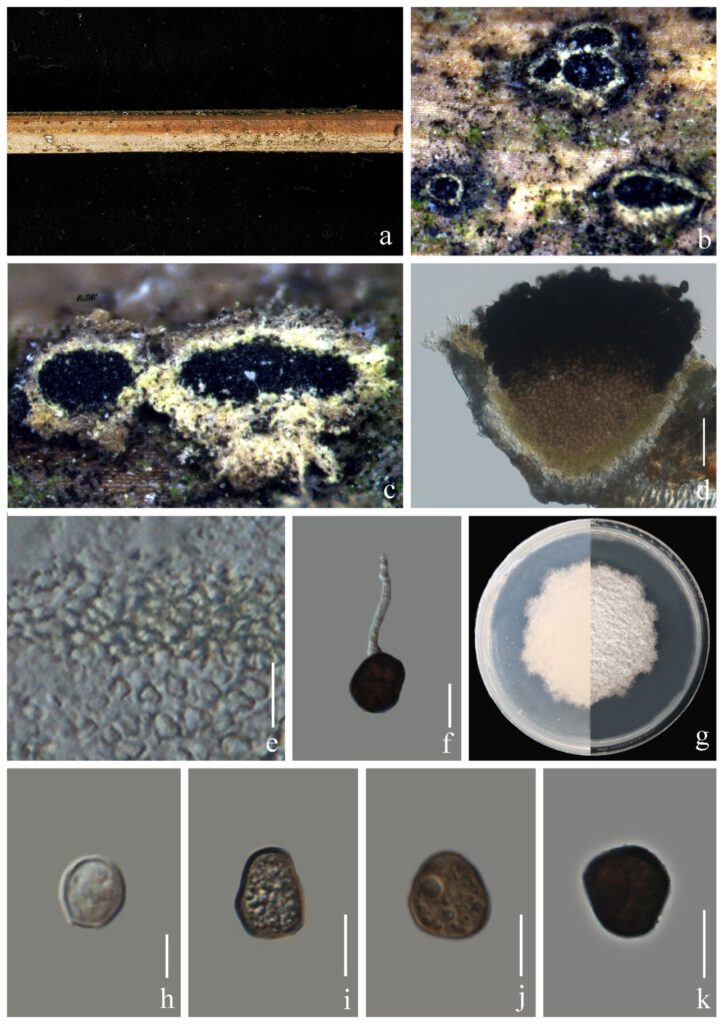Endocalyx ptychospermatis YR Xiong, Manawas & KD Hyde, sp. nov.
MycoBank number: MB 558846; Index Fungorum number: IF 558846; Facesoffungi number: FoF 10540;
Etymology: Refers to the name of the host genus, Ptychosperma macarthurii.
Holotype: ZHKU 21-0001
Saprobic on dead petiole of Ptychosperma macarthurii. Sexual morph: Not observed. Asexual morph: Conidiomata 470–520 µm diam, up to 100 µm high, light yellow to light green raised cup-shaped or cylindrical structure, with holes surrounded by yellow hyphae rings and hyaline conidiophores. Conidiogenous cells 4–6 µm long ( 5 um, n = 20), integrated, unicellular, hyaline, knob-like. Conidia 10–20 × 7–15 µm (13 ´ 11 um, n = 40), unicellular, dark brown, elliptical to close polygonal conidia and verrucous inclusions.
Culture characteristics: Colonies on PDA reaching 6 cm diam after seven days at 25 °C, white at first, irregular, raised, undulate, rough, after maturity, smooth at the margin, white from above, pale-brown from below.
Material examined: CHINA, Guangdong Province, Saprobic on dead petiole of Ptychosperma macarthurii (Arecaceae). 17 December 2020, YR Xiong (ZHKU 21–0001, holotype); ex-type living culture, MFLUCC 21–0008; ibid. MFLUCC 21–0009, MFLUCC 21–0010 (ex-paratype).

Fig. 21 Endocalyx ptychospermati (ZHKU 21-0001, holotype). a–c Conidiomata on host surface. d Section of conidioma. e Conidiomata wall. f Sprout conidia. g Culture on PDA. h–k Conidia. Scale bars: d = 40 µm, e = 10 µm, f = 10 µm, h = 5 µm, i–k = 10 µm.
